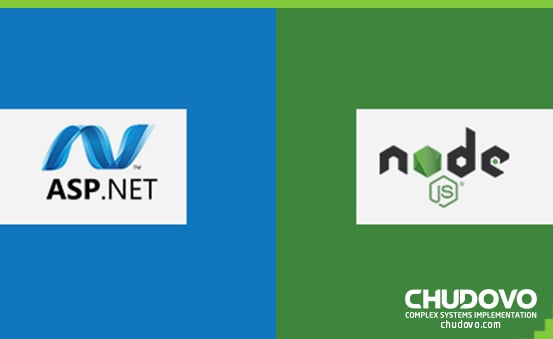Discovering the Power of Node.js: A Look at Real-World Applications
Node.js is a powerful Javascript tool that enables developers to build fast, responsive, event-based Node.js apps outside of web browsers. Many developers prefer node.js on the backend to other options as it’s more beginner friendly than the others.
If you’ve been wondering if Node.js is suitable for your software development project or if you’re just curious about the technology on a basic level, this article has what you need. Below, we’ll dive into what node.js is, the features of node.js that make it a great tool, the type of projects it works best for, and examples of node.js apps.
We’ll also provide some disadvantages and advantages of the tool to help you make a better scalable decision. Below is a table of content of what this article discusses:
Table of Content

What is Node.js?
Simply, Node.js is an open-source, event-driven, asynchronous javascript environment that’s built on Google Chrome’s V8 JavaScript engine and is used in the development of scalable applications. The creator made it free for anyone, and it runs on multiple platforms, including Linux, Unix, Windows, and more.
Developers who use Node.js on the backend prefer it over other options because of its appropriateness for building progressive web applications using real-time and lightweight faster development. Some applications best suited for Node.js include social messaging platforms, social media, collaborative tools, streaming, etc.
One of the most fascinating things about Node.js is that it helps developers to run javascript outside of a browser. Before the creation of Node.js, developers could only run javascript within the web browser, preventing Java from generally growing and evolving beyond a programming language for front-end interactions.
Thanks to Node.js, Javascript evolved and became the go-to tool for building web and mobile applications and supporting two-way, collaborative, and real-time communication between computers and users. In many ways, Node.js apps changed the game for software development.
Features of Node.js
One of the many reasons why developers love to use Node.js for software development is because of the features it has. Some of the top node.js features include the following:
- Licensed by MIT
- Supports module caching allowing for faster page loading
- It doesn’t buffer data as it uses the callback function to display data faster and easier
- Has the online repository, Node Package Manager (NPM), for managing local dependencies
- The single thread allows applications to process requests asynchronously and helps Node.js apps stay highly scalable
- It is built on Google Chrome’s V8 JavaScript engine, enabling it to perform optimally and execute codes faster
- Node.js is open-source, which means it’s free for any developer to use. This also means it’ll be easier to find information about Node.js from other users.
- The event-driven concept that boosts performance
- The asynchronous operation that allows node.js to perform in a non-blocking way
- Able to handle multiple client requests through single-thread event loop model
Best Uses And Types of Node.js Apps to Build
Node.js is a powerful javascript tool that many software application projects will benefit from. But it’s not an excellent fit for every idea under the planet. Below are the best use cases for Node.js:
- Streaming applications
- Location-based apps
- IoT applications
- Real-time applications
- Single-page applications
Streaming applications
Two main features of Node make it a great option for building audio and video streaming applications. The first is that it’s excellent for quickly synchronizing data between the client and server. And the second is that it allows for real-time data streaming, disallowing delays and maintaining the core functionality of streaming platforms.
An example of a streaming app that could benefit from Node.js is Netflix, which already uses the tool. Other examples of streaming platforms include Youtube, Spotify, Video, Youtube Music, Boomplay, Amazon Prime, HBO Max, etc.
Location-based apps
Many applications currently provide location-based features that are the main attractions. Hence, they’ll need to get that part of the product right.
For apps like Uber and Bolt, two giants in the ride-hailing and sharing service industry, they’ll need Node.js’s power to enable real-time updates and the tools asynchrony to ensure the apps run smoothly. Without it, there could be issues with tracking and updating ride details – a feature paramount for the driver and passenger’s safety.
IoT applications
Node.js supports applications that deal with extensive, real-time data and traffic. For internet-of-things (IoT) applications, this is incredibly paramount as the connected devices, such as cameras and sensors, would need to communicate with each other in real-time to be able to display and make sense of data.
Examples of types of IoT applications that would benefit from building with Node.Js is fleet management systems, agricultural goods monitoring, wearable devices, and traffic monitoring.
Real-time applications
Real-time applications are software that users interact with and receive an immediate response from the server or interface. These could be social messaging platforms like Linkedin or Slack or games.
What endears real-time app developers to Node is that the tool handles the two-way communication channel well and works to provide real-time synchronization. If your software product requires it to process, synchronize, and display real-time data and actions, then you should consider Node.js.
Single-page applications
A single-page application (SPA) is an app that works without having to constantly reload the current page while a user is operating it. Instead of automatically reloading the page, it dynamically rewrites the current page with the latest information. This way, the application is able to run on one page only.
Applications like this require real-time synchronization and fast data load times. Examples of single-page applications are Twitter and Gmail. Such applications would usually use Node.js on the backend. And for the frontend, they’ll have Vue, React, or Angular framework, all while running on Javascript.

Real Examples of Node.js Apps in Action
We’ve explained what Node.js is, its features, and its best use cases, but that’s all in theory. Next, let’s see real-world node.js examples of apps that use node.js in their development.
The list below features some of the most used apps worldwide, covering different use cases, user profiles, target audiences, and functions. We’ll look at how these applications applied node.js and how it has benefitted them thus far.
If you’re looking for inspiration for the software product you plan to develop or upgrade, you might find some within this list that could help.
- Netflix
- Uber
- Upwork
- Trello
- Slack
- Asana
- Figma
- Godaddy
- Paypal
1. Netflix
Netflix is the most popular movie and TV series streaming platform in the world. What started as a DVD rental service in 1997 by Reed Hastings and Marc Rudolph has now grown into a business that’s worth billions of dollars and includes a film production arm as well.
When they had just started, it was an online shop where customers could rent a movie or television show online, and Netflix would ship out the CD to you. But down the line, they changed their business model to a subscription-based service where customers paid a fixed fee monthly, and they could rent the content they wanted.
This change saw their customer base grow from thousands to millions in just a few years, precisely between 1997 to 2003, way ahead of their major competitor, Blockbuster. As they expanded, they needed to serve their growing millions of customers simultaneously without a glitch.
Then in 2007, they adjusted their model again to online video streaming, and it’s been upward since then. But serving millions of customers at the same time gets tricky, and that’s where Node.js comes in. Using Node.js and Java, Netflix has been able to reduce development time and build faster, smoother, better-versioned apps for their users across multiple platforms.
2. Uber
If you move around a lot or live in medium to large-sized cities, you’ll know about Uber, especially if your locale doesn’t have a community taxi service. Uber is a ride-hailing and ride-sharing mobile app where users can order a ride to any destination within Uber’s operation.
As long as you’re within Uber’s covered territories, a user can book a ride from their current location to anywhere within minutes and, sometimes, even seconds. You’ll get a price range, estimated time of arrival of your ride, and arrival time at your destination. Currently, it serves millions of customers worldwide and hosts billions of rides quarterly.
How is Uber able to maintain a clean and seamless operation on their mobile application even with the millions of transactions hosted on the app daily? The answer is in the development process.
What makes Uber special is that it was one of the initial adopters of Node.js during its development stage. Using Node.js to build Uber gave them the ability to work with shorter and more powerful code and to stand up against huge loads from the millions of passenger-driver matches happening per minute.
3. Upwork
Upwork is an online marketplace for freelancers and freelance job contractors. It was founded by Odysseas Tsatalos in 1999 and is one of the top sites for finding freelancers for remote jobs and remote gig jobs. It prides itself on providing a safe and secure platform where freelancers and their clients can meet, discuss jobs, and make and receive payments for the service.
At any point in time, there are thousands of open jobs and millions of freelancers bidding for these jobs per time. Because of this, the Upwork platform has the tremendous workload of ensuring the application processes go smoothly, communication and messaging features are seamless, and both parties make and receive payments hitch-free. One of the many things that make Upwork stand out is that it uses Node.js in its backend.
4. Trello
Created by Avram Joel Spolsky in 2011, Trello is a beginner-friendly project management software agile teams use worldwide. It is a simple collaborative tool that allows members of teams in various locations to plan, organize, and work together on team projects while keeping everyone in the loop about the project’s progression.
Teams hosted on Trello can see past, present, and future tasks, see who’s working on what, what tasks are ongoing, and the project’s overall progress. Organizations whose teams work on Trello can also integrate third-party team management software into Trello, including Salesforce, Slack, Twitter, Google Drive, and GitHub.
For its primary function to be effective, Trello needed to be a platform that syncs and displays updates instantly and works with a visually pleasing and intuitive interface. The Trello team was able to achieve this feat using Node.js. From the start, Trello has always been a software application born out of Node.js capabilities that enable code reusability and fast development.
Initially, Trello was meant to be a single-page application with minimal features. But it turned out that Node.js could do much more than host single-page applications. Instead, it can handle complex background work while the user completes numerous simple-looking but powerful tasks on their end.
5. Slack
Slack was created by Stewart Butterfield, Serguei Mourachov, Eric Costello, and Cal Henderson in 2009. When it comes to team management, Slack is one of the topmost software applications that organizations use for communications.
Slack is a social messaging app for teams and organizations. Think about the essential functions of Whatsapp groups and private messaging. And it uses Node.js to support functionalities on the desktop application.
Users can send and receive instant messages and send files to the entire group or an individual. Also, team leads can coordinate special groups within a group helping to ensure fast communication and a smoother collaborative process to achieve corporate tasks and goals.
6. Linkedin
LinkedIn is a global shaper in the professional social media space. It helps millions of people showcase their expertise and find jobs on the same platform while making connections and meeting new people for future collaboration.
For Linkedin, nde.js is the backbone of the application’s backend and has seen tremendous improvement since it switched from Ruby-on-Rails. The Linkedin team also needed a backend that wouldn’t buckle under the pressure of multiple users. Node.js met this requirement as it boosted performance, whereas Ruby-on-Rails found it challenging.
7. Asana
Asana is yet another team project management tool that is aimed at improving collaboration among team members and boosting general team performance. Created by Facebook co-founder Dustin Moskovitz and a member of his team, Rosenstein, in 2018, Asana has quickly grown to be a teachable moment for founders wanting to know how they were able to manage their Facebook project management crisis.
How Asana started resulted from Moskovitz and Rosenstein noticing that as Facebook expanded its teams and growth measures, it became harder to track and execute projects. Hence, they built Asana with Node.js as a significant part of the backend.
8. Figma
The Figma app is a UI design prototyping application that allows users to showcase their talents while putting together great ideas that can potentially change the design landscape of their industry. Created by Evan Wallace and Dylan Field in 2012, Figma allows the product design team to collaborate on designs and deliver design tasks faster than without Figma.
Although Founder Dylan was only 21 years old at the time, he wasn’t afraid to take on the dominant Adobe design giant by designing and building a product as accessible, flexible, and valuable to a wide range of people just like google docs.
9. Go Daddy
Go Daddy is a web hosting and website domain registration document that keeps following you around. Most people prefer the familiarity and responsiveness of their team. Go Daddy uses Node.js on its backend.
10. Twitter
If you love having conversations on social media with people you know or don’t know, then Twitter will soon have you in a chokehold. It’s a social media platform that prioritizes text posts over media posts like Instagram, prompting people to say more valuable and meaningful things.
It was founded by Noiah Glass, Evan Williams, Biz Stone, and the infamous Jack Dorsey, who no longer controls Twitter as tech billionaire Elon Musk has taken it over. In 2007, the app was built with Ruby on Rails and was moved to the Node.js platform.
11. Paypal
Paypal is a renowned peer-to-peer payment solution for residents of certain specific locations. Countries excluded from its service coverage are mostly third-world countries. However, how it came to start using Node.js is with a meaningful story.
Two experimental teams were tasked with building the backend with two different tools. The one with five people, the Java team, took a long time to get the job done. Whereas, Node.js, with just two members, was able to complete the prototype and show how it could be achieved within a shorter time.
As a result of this little competition, Paypal adopted Node.js, which has become a core part of the platform’s functionality. Paypal could then process requests with half the time required previously used.

Advantages and Disadvantages of Node.Js
In this article, we’ve highlighted some of the best sides of Node.js. You know what makes developers tick about it, but is it suitable for your project? Since we’ve covered the main advantages and features of Node.js, let’s have a look at the disadvantages:
- Reduced performance:
Executing heavier computing tasks become more difficult due to single-threaded and event-driven feature resulting in reduced performance
- Difficulty maintaining code
In an attempt to safeguard asynchronous queued tasks using the callback feature, having too many complex callbacks makes maintaining code difficult
- Poor quality of NPM
The incomplete and poor quality of the NPM registries and libraries make development difficult for beginners
- Unstable API
Node.js API changes regularly, forcing developers to change the application access code too
To level the playing field, here is a brief list of the advantages of Node.js:
- Easy to find help and support for commonly used tools
- Quick cashing enables faster loading time
- Boosts performance and response time
- Great for building collaborative, cross-functional teams and supports fullstack development
- Because it is JavaScript, it is seen as easy to learn and beginner friendly
- Node.js is open source and has one of the largest and most active community support where even experts can find help with the weirdest development problems
- Modern applications can scale up and down with ease according to their needs
- It is highly customizable and can be extended to meet customer or client requirements.
- Effective in helping development teams to save energy, time, and resources

Certified engineers
Convenient rates
Fast start
Profitable conditions
Agreement with
EU company
English and German
speaking engineers
Conclusion
Deciding to use Node.js for your software development project is a giant leap. It’s fast and event-based, allowing you to view events as they happen and interact with them. That’s why developers prefer it above some other options.
Node.js is famous for helping teams save costs and is easy to learn but has its pitfalls. Node.js has an unstable API, which poses difficulty with code maintenance.
FAQs
What are the features of Node.js?
Node.js has shorter development times, can handle multiple client requests, is built on Google Chrome’s V8 JavaScript engine, supports real-time applications, and doesn’t buffer data. These are great features, but Node.js also has disadvantages you should know about.
What are examples of node.js applications?
Good examples of applications built with node.js on their backend include Netflix, Uber, Coursera, LinkedIn, etc
What is a node.js file?
A Node.js file is a file containing future tasks that haven’t been executed.
Is node.js challenging to use?
Node.js is not challenging to use and is often described as a more straightforward and beginner-friendly tool. Also, it has a large community base where you can find help with any node.js questions you may have as a beginner or expert developer.
If you need highly qualified Node.js apps developers at the right price for your project, contact us now!



